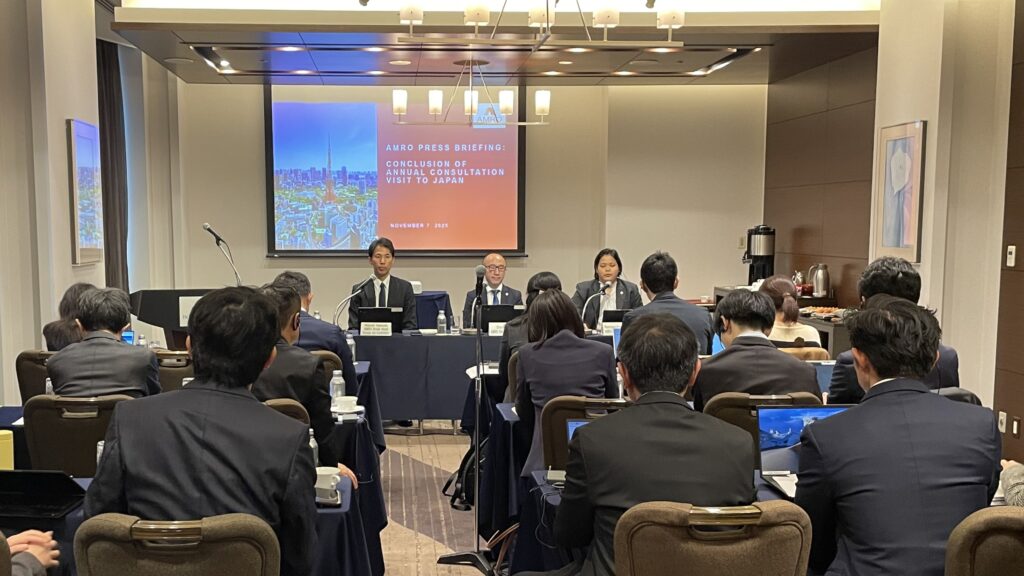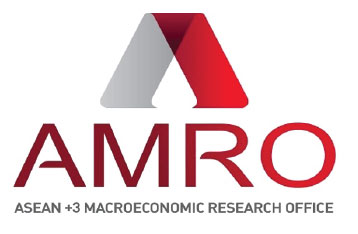
SINGAPORE, November 7, 2025 – Japan’s economy is transitioning to a “new normal” of higher interest rates with evolving growth drivers and inflation dynamics. Under an uncertain external environment, domestic demand has become a key growth driver, underpinned by private consumption and investment. Keeping up the growth momentum while preserving financial stability and fiscal sustainability will require carefully calibrated policies.
This preliminary assessment was made by the ASEAN+3 Macroeconomic Research Office (AMRO) following its Annual Consultation Visit to Japan from October 27 to November 7, 2025. The mission was led by AMRO Lead Economist Runchana Pongsaparn. AMRO Director/CEO Yasuto Watanabe and Chief Economist Dong He joined the policy discussions and have arranged meetings with Minister of Finance Satsuki Katayama and Bank of Japan (BOJ) Governor Kazuo Ueda.
Economic developments and outlook
“After a soft first quarter, activity picked up in Q2 2025 on stronger private consumption and net exports,” said Dr. Pongsaparn. “We project GDP growth at 1.0 percent in 2025, moderating to 0.6 percent in 2026 when the full year impact of tariff effects take hold. With external uncertainty, growth will need to rely on private consumption and investment supported by rising real wages and positive business sentiment.”
Inflationary pressures remain persistent, even as food-related supply shocks have subsided. CPI (excluding fresh food) inflation eased to 2.9 percent in September from its peak at 3.7 percent in May 2025. Food prices were a main driver of inflation, contributing to more than half of the price increase during the year. Inflation is projected to decline gradually, from 3.0 percent in 2025 to 2.1 percent in 2026. Prices have been rising faster than nominal wages despite strong wage gains amid a tight labor market and government support.
Japan’s external position is solid. Despite tariff-related export moderation, the current account surplus reached 4.6 percent of GDP in H1 2025, and is projected at 4.4 percent in 2025 and 4.1 percent in 2026, supported by strong primary income from overseas investments.
Fiscal consolidation continues. According to AMRO’s estimate, the general government deficit narrowed to 1.8 percent of GDP in FY2024 from 1.9 percent in FY2023, as pandemic-era expenses such as subsidies were phased out and spending normalized. With revenue growth and expenditure rationalization, the deficit is projected to decline further to 1.5 percent of GDP in FY2025. Public debt remains high but is easing from 237 percent of GDP in FY2024 to around 232 percent in FY2025.
The BOJ has maintained its policy rate after a January 2025 hike, while signaling readiness for gradual normalization. The policy rate increase has transmitted to short-term market and lending rates, marking a transition to a higher-rate environment. The BOJ has also made another incremental step toward balance sheet normalization by announcing plans to sell its holdings of exchanged-traded funds (ETFs) and real estate investment trusts (J-REITs) in addition to the ongoing tapering of government bond purchases.
The banking system remains sound, with solid buffers. Banks are adjusting to the new rate environment by strengthening asset-liability management and incorporating rate volatility into risk management strategies.
Risks, vulnerabilities, and challenges
External risks include US trade measures, a sharper global slowdown, renewed commodity price shocks, and tighter or more volatile global financial conditions. Domestic vulnerabilities stem from fiscal pressures, weakening wage–price dynamics, demographics, and climate transition costs.
Policy priorities
AMRO recommends anchoring the transition through a well-calibrated policy package:
- Monetary policy normalization should proceed at a measured pace and remain data-driven, balancing inflation and growth risks. Durable wage-price dynamics, the impact of US tariffs, and core inflation trends should guide the pace of further hikes. The ongoing tapering of government bond purchases, along with the announced plans to sell ETFs and J-REITs, should emphasize predictability, effective communication, and operational agility.
- Fiscal policy should be agile and targeted, supporting vulnerable groups while preserving fiscal discipline. Over the medium-term, consolidation efforts on revenue mobilization and expenditure rationalization should continue. In the long run, fiscal policy must address aging-related spending pressures as well as strengthen climate transition and growth-enhancing structural reforms. Debt consolidation can help contain debt repayment ratios through lower risk premia.
- While overall financial stability remains sound, a continued increase in property prices, particularly in the major metropolitan areas, warrants close monitoring. Information sharing and close coordination among relevant agencies would provide a strong foundation for formulating macroprudential and property-related policies, should the need arise.
- Structural reforms to raise productivity, foster innovation, and accelerate digital and green transformation are vital. Continued efforts to enhance labor-market flexibility and skills upgrading will help lift potential growth and strengthen Japan’s resilience.
The AMRO team extends its appreciation to the Japanese authorities and other participating organizations for their cooperation and candid discussions during the mission.
Also available in Japanese
About AMRO
The ASEAN+3 Macroeconomic Research Office (AMRO) is an international organization established to contribute toward securing macroeconomic and financial stability of the ASEAN+3 region, comprising members of the Association of Southeast Asian Nations (ASEAN) and China; Hong Kong, China; Japan; and Korea. AMRO’s mandate is to conduct macroeconomic surveillance, support regional financial arrangements, and provide technical assistance to the members. In addition, AMRO also serves as a regional knowledge hub and provides support to ASEAN+3 financial cooperation.
